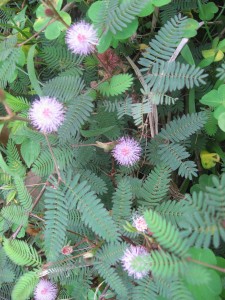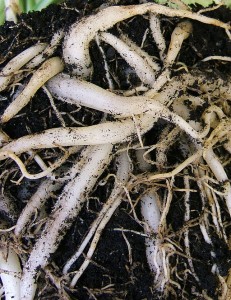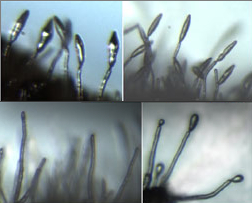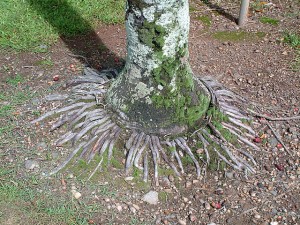 Plants, while not generally thought of as being intelligent, do exhibit problem solving, planning, communication, and defensive behavior. Plants actively search for nutrients and for sunlight. They move their leaves and stems in response to light and can change in which direction they grow in response to different available nutrients. They can move toward prey and away from competition.
Plants, while not generally thought of as being intelligent, do exhibit problem solving, planning, communication, and defensive behavior. Plants actively search for nutrients and for sunlight. They move their leaves and stems in response to light and can change in which direction they grow in response to different available nutrients. They can move toward prey and away from competition.
Multiple Senses
Plants can sense touch, hearing, smell, and electromagnetic waves. Plants such

as the Mimosa close their leaves upon touch. Some plants respond to noises with changes in growth patterns. As discussed the Dodder plant uses its sense of smell to guide its search for other plants from which it can extract nutrients. Most plants can signal other plants with odorous chemicals to warn of a predator. Their ability to sense light allows them to differentiate day and night, as well as to defend against too much ultraviolet light by producing special pigments.
Elaborate Communication
Plants exhibit elaborate communication within themselves, with other plants, and even with other species, such as microbes and fungi. A plant is continually sending information between its multiple components about environmental factors, such as the amount of water,

minerals and sunlight available, and warning of the presence of competitive species and predators. Communication within plants can be conducted through the use of electric signals, mechanical or water pressure, and chemicals. There are a large number of chemicals involved in plants’ internal communication: proteins,  hormones, minerals, nucleic acids, sugars, fats, and complex carbohydrates. All of these are involved in triggering plant behaviors.
hormones, minerals, nucleic acids, sugars, fats, and complex carbohydrates. All of these are involved in triggering plant behaviors.
Communication between plants occurs through chemical messages released in the air and by their roots. The root method is slow, and air messages depend upon the weather. Plants can send messages to warn other plants about a predator, which causes the other plants to prepare defensive chemicals to fend off the intruder.
Interspecies Communication
Elaborate communication occurs between plants and funguses. Many plants have established relations with fungi whereby the plant gives the fungi energy and  organic compounds produced from sunlight by photosynthesis, and the fungi gives the plant minerals and other nutrients from the soil. If the fungus doesn’t produce enough nutrients, the plant can kill the fungus. Conversely, if the fungus is helpful the plant will give it increasing amounts of energy and valuable compounds.
organic compounds produced from sunlight by photosynthesis, and the fungi gives the plant minerals and other nutrients from the soil. If the fungus doesn’t produce enough nutrients, the plant can kill the fungus. Conversely, if the fungus is helpful the plant will give it increasing amounts of energy and valuable compounds.
Recent research has shown that this partnership has been critical in evolution. The cooperation between plants and fungus date back 400 million years. The fungus were first on dry land, and served as the roots for plants until they were able to develop their own. Without fungus partnership plants would not have been able to establish a base on land. The first plants needed to compete increasingly for light as there was less CO2 and the fungal partnership suffered. As plants became taller and eventually developed complex organs of leaves and roots to help survival the fungal-plant efficiency increased.
 Eighty percent of plants have fungus hanging from their roots, which they use to form a network of communications between the plants. These networks of fungi transport water and food between the plants, enabling them to share water and nutrients with each other. When a parasite or toxic microbe attacks one of these plants, a message can be sent through the fungus network, which prepares other plants against the invader by stimulating genetic material to create protective enzymes. Plants that are warned do much better in fighting the predator. In one Canadian forest, it was discovered that the fungus communication connections between multiple species of trees were twenty miles long and communication between them was very rapid.
Eighty percent of plants have fungus hanging from their roots, which they use to form a network of communications between the plants. These networks of fungi transport water and food between the plants, enabling them to share water and nutrients with each other. When a parasite or toxic microbe attacks one of these plants, a message can be sent through the fungus network, which prepares other plants against the invader by stimulating genetic material to create protective enzymes. Plants that are warned do much better in fighting the predator. In one Canadian forest, it was discovered that the fungus communication connections between multiple species of trees were twenty miles long and communication between them was very rapid.
Can this level of communication between plants and other species be occurring without cognitive processes? A future post will discuss elaborate defensive moves, and planning ahead.